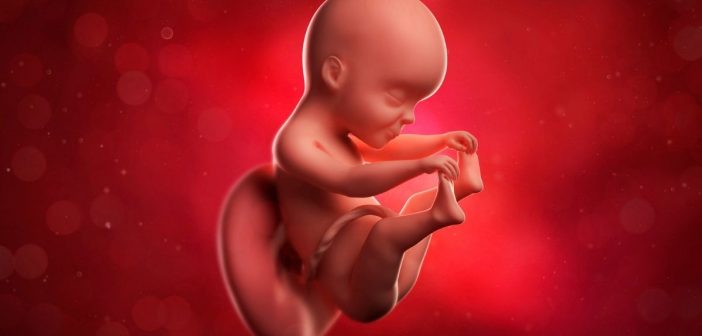Introduction
Your bump will grow in size as your baby develops within your womb throughout pregnancy (uterus). As your baby is surrounded by amniotic fluid, this is unlikely to give you an accurate measurement of his size. A problem occurs when pregnant mothers are unfamiliar with the normal fetal weight and length for a certain gestational time.
Pregnant women are frequently perplexed by facts about the fetal length and weight in these scenarios, and they express concern about their baby’s growth. Paediatricians have devised the Fetal Growth Chart to avert such scenarios. You can find out the typical fetal length and weight by gestational age using the fetal growth chart.

Understanding fetal length and weight
From eight to 19 weeks of pregnancy, a baby in the womb is commonly measured from head to bottom (crown to rump length or CRL).
Your baby will be more active at your 20-week anomaly scan, therefore the CRL won’t be as precise. Your baby’s head circumference (HC), abdominal circumference (AC), and thigh bone (femur) length will all be measured by your doctor (FL).
Our chart uses head to bottom length (CRL) from eight weeks to 19 weeks, then crown-to-heel measurements till birth to keep things simple.
If the discrepancy between what is indicated below for your stage of pregnancy and what is shown below for your stage of pregnancy is more than two weeks, your doctor will be worried about your baby’s growth. If this occurs, they will request more testing to confirm that your baby is healthy and that your pregnancy is proceeding normally.
Fetal growth chart
Eight to 19 weeks pregnancy
| Pregnancy week | Fetal length (in cms) | Fetal weight (in grams) |
| 8 | 1.6 | 1 |
| 9 | 2.3 | 2 |
| 10 | 3.1 | 4 |
| 11 | 4.1 | 7 |
| 12 | 5.4 | 14 |
| 13 | 7.4 | 23 |
| 14 | 8.7 | 43 |
| 15 | 10.1 | 70 |
| 16 | 11.6 | 100 |
| 17 | 13 | 140 |
| 18 | 14.2 | 190 |
| 19 | 15.3 | 240 |
Fetal growth chart: 20 to 40 weeks
| Pregnancy week | Fetal length (in cms) | Fetal weight (in grams) |
| 20 | 25.6 | 300 |
| 21 | 26.7 | 360 |
| 22 | 27.8 | 430 |
| 23 | 28. 9 | 501 |
| 24 | 30 | 600 |
| 25 | 34.6 | 660 |
| 26 | 35.6 | 760 |
| 27 | 36.6 | 875 |
| 28 | 37.6 | 1kg |
| 29 | 38.6 | 1.2 kg |
| 30 | 39.9 | 1.3 kg |
| 31 | 41.1 | 1.5 kg |
| 32 | 42.4 | 1.7 kg |
| 33 | 43.7 | 1.9 kg |
| 34 | 45 | 2.1 kg |
| 35 | 46.2 | 2.4 kg |
| 36 | 47.4 | 2.6 kg |
| 37 | 48.6 | 2.9 kg |
| 38
39 40 |
49.8
50.7 51.2 |
3.1 kg
3.3 kg 3.5 kg |
How many times will the baby be measured during pregnancy?
- During your pregnancy, your baby’s growth will be monitored at the following scans:
- During the first six to nine weeks of pregnancy, a dating and viability scan is performed. The crown to rump length (CRL) of your baby will be used at this point to give you an accurate due date.
- During the 11th to 13th week of pregnancy, a nuchal translucency scan is performed.
- Between 18 and 20 weeks, an anomaly scan (ultrasound level II) was performed. The doctor will measure many regions of your baby’s anatomy during this scan, including his head circumference (HC), abdominal circumference (AC), and thigh bone (femur) length (FL). Because each kid has his proportions, it’s usual for the gestational age assigned to each region of his body to differ significantly from one another. All newborns in the world would be the same height and weight when they were born if they all grew in the same way.
- Between 28 and 32 weeks in your third trimester, you’ll get a growth scan or fetal wellness scan.
Understanding fetal growth week by week with Nurturey PinkBook
Nurturey’s PinkBook NHS weekly guide outlines the baby’s growth and development as well as the changes in the mother’s body week by week. Furthermore, you may access pregnancy advice straight from the NHS on issues like health and nutrition, immunizations throughout pregnancy, antenatal care, testing and checkups, and so on, providing you with verified and up-to-date information from a reputable source. Nurturey PinkBook is a pregnancy and child health management app. It is the smartest digital upgrade for the NHS paper red book.
Conclusion
Some babies are just smaller or bigger than others; in the same way, some adults are thin or obese. However, just because your baby is bigger or smaller does not indicate a problem with them when they are delivered. That is demonstrated through practice. Many newborns weighing less than 2 kg but more than 4 kg quickly caught up to the average baby’s growth.
Therefore, as long as everything else is normal, you don’t need to be concerned if your baby’s length and weight differ from the usual fetal length and weight. Feel the joy of pregnancy while keeping in mind that the mother’s spiritual serenity is food for her and her baby, whereas pregnancy stress is their adversary.




